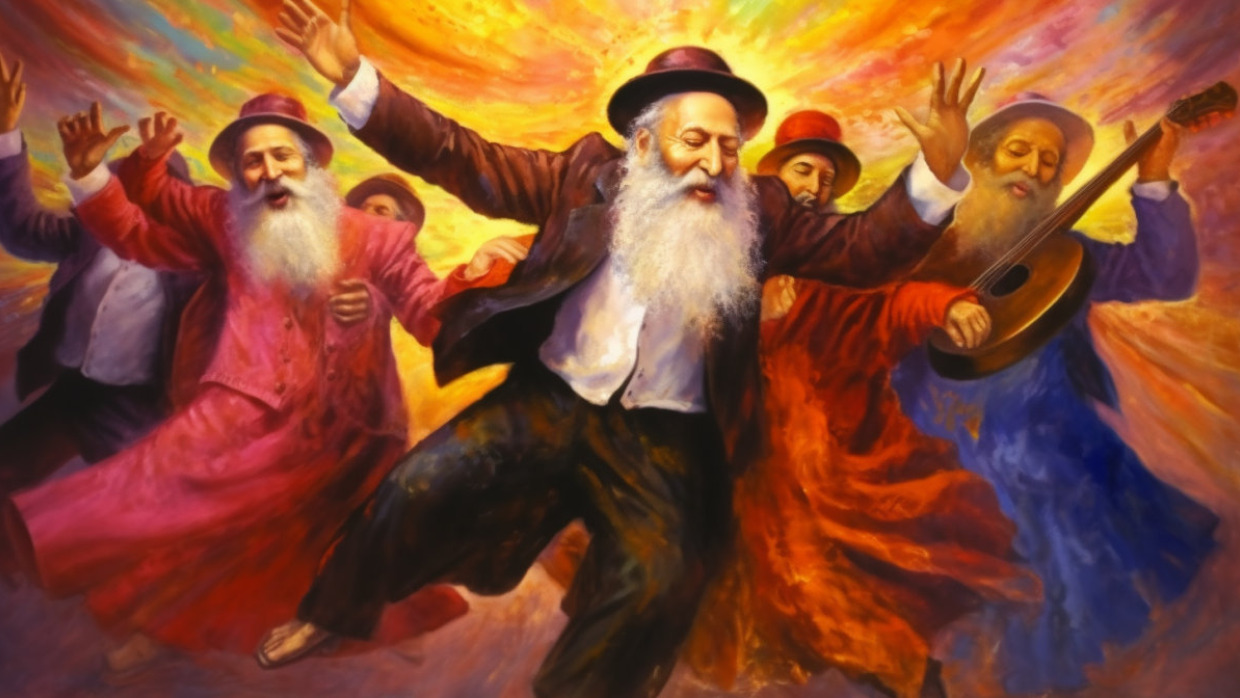 Vampire Weekend's Surprising Jewish Stories
Vampire Weekend's Surprising Jewish Stories


5 min read
Sometimes all you need to do is let go and dance.
Dance transcends all boundaries of culture, religion, language and time. No matter where one drops a pin on the map and on the timeline, one is bound to find some form of dance.
Wherever Jews have gone, they have taken their dance moves with them. From Ancient Israel, to Europe and America, Jews have always rejoiced and celebrated by twirling and jumping. Apart from weddings, the Jewish national dance event par excellence is Simchat Torah. After completing reading the Torah over a year cycle, all types of Jews, young and old, come together to dance with Torah scrolls – often for hours on end. The entire journey of the year culminates in dance and joyous celebration.
Like many things in Jewish life, the seemingly casual act of dancing conceals great meaning and potential power. Indeed, dancing can be a vehicle for self-discovery, therapy, and connection to a hidden spirituality – a readily available tool for a generation mired in self-doubts, anxiety and depression.
In the Bible, the act of dance is often mentioned as a method of expressing gratitude and joy. After the splitting of the Red Sea and the miraculous salvation from the Egyptians in the Exodus story, Miriam and all the Jewish women took with them “timbrel and dances” and sang to God.1
King David in his victorious march to Jerusalem danced “with all his might before God”.2 The Talmud – one of the most important collections of Jewish text – recounts many stories of distinguished sages breaking out from their serious leadership role to dance for the bride and groom in often ridiculous and comical ways.
Since the late 18th century, dance has become even more of a pronounced feature in Jewish life due to Israel Baal Shem Tov. The Baal Shem Tov was the founder of Hasidism, a revolutionary movement in the Jewish world. The Baal Shem Tov sought to emphasize joy and ecstatic devotion as a central feature of serving God. In Hasidism, music and dance are seen as important avenues of worship and religious practice.

The Baal Shem Tov famously said that dancing can be a form of prayer and find its place at the very center of religious life. Rabbi Shlomo of Karlin, one of the scions of the Hassidic heritage, stated that dance has the ability to lift one up from the earth. He meant not just in a physical sense – as jumping and twirling picks you up from the floor – but in a deeper emotional and spiritual manner. This needs explanation.
In Genesis, the creation of Man is described by God taking a mound of earth and blowing life into it, creating the first man. Jewish mysticism explains that this is not merely a physical description of what happened: it is a glimpse into the psychological and emotional make-up of the human being. A person’s innate nature is to be drawn to the earth. Each person has a “heavier” part that naturally gravitates towards the more lowly, inferior, emotions and habits. In general, man is drawn towards laziness, depression, sadness, despair, and/or being overtaken by physical pleasures. Of course, every person is different – but this is how Judaism understands the universal, prototypical, “man” to be. It takes strength to go against one’s nature – to pick oneself up and elevate one’s emotions to a higher frequency. This is where the act of dance, as Rabbi Shlomo explains, can be a trigger and a catalyst.
Dance can be an uplifting, purifying and therapeutic way to unlock your latent power.
By forcing oneself to dance, one can pull oneself up out of one’s own “earthly nature” by literally jumping off the floor itself. The act of dancing has the ability to bring you to true joy and to the discovery of a higher part of yourself.
When we dance and fill ourselves with life and joy, it’s as if we are filling the whole universe with renewed life – lifting it up to a higher frequency. At the very least, by increasing our joy and happiness through dance, we become conduits for positivity that affects the people in our lives.
Dance and music will never leave the panorama of human life. Used in the right way, dance can be an uplifting, purifying and therapeutic way to unlock your latent power. It can even be a spiritual experience that connects you to something higher and bigger than yourself. If you are shy or in a bad mood, you can force yourself to dance, which will get you out of yourself and enable to break through internal barriers that are holding you back. You don’t need a dancing partner to tap into this power. Simply choose a song or a playlist that you love and let go when no one is watching. It’s a very affordable therapeutic experience.
If you want to break free from anxiety and stress, sometimes the best thing to do is to get up and choose to live in joy. The ability to discover this part of yourself might not be so distant. Indeed, the secret may be hidden in your body itself. Simchat Torah itself teaches us this. All the loftiness of Torah study throughout the year culminates in the simplicity of the joy locked inside of yourself, waiting to come out. When the mind is confusing and talking too much, perhaps one needs to let another part of their body do the talking: one’s feet.

This is a helpful perspective. As one who has studied and continues to appreciate ballet, the running in circles I see by men at weddings and other simchas is very off putting. It even seems a bit sinister. I don’t think I will ever find it aesthetically pleasing, but at least now I understand it a little better.